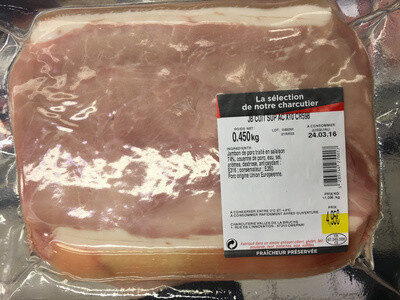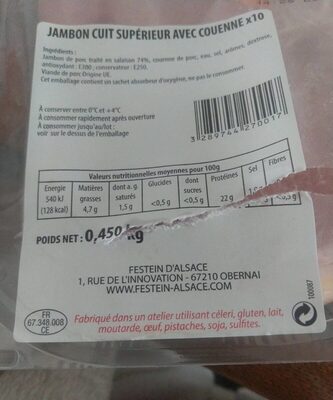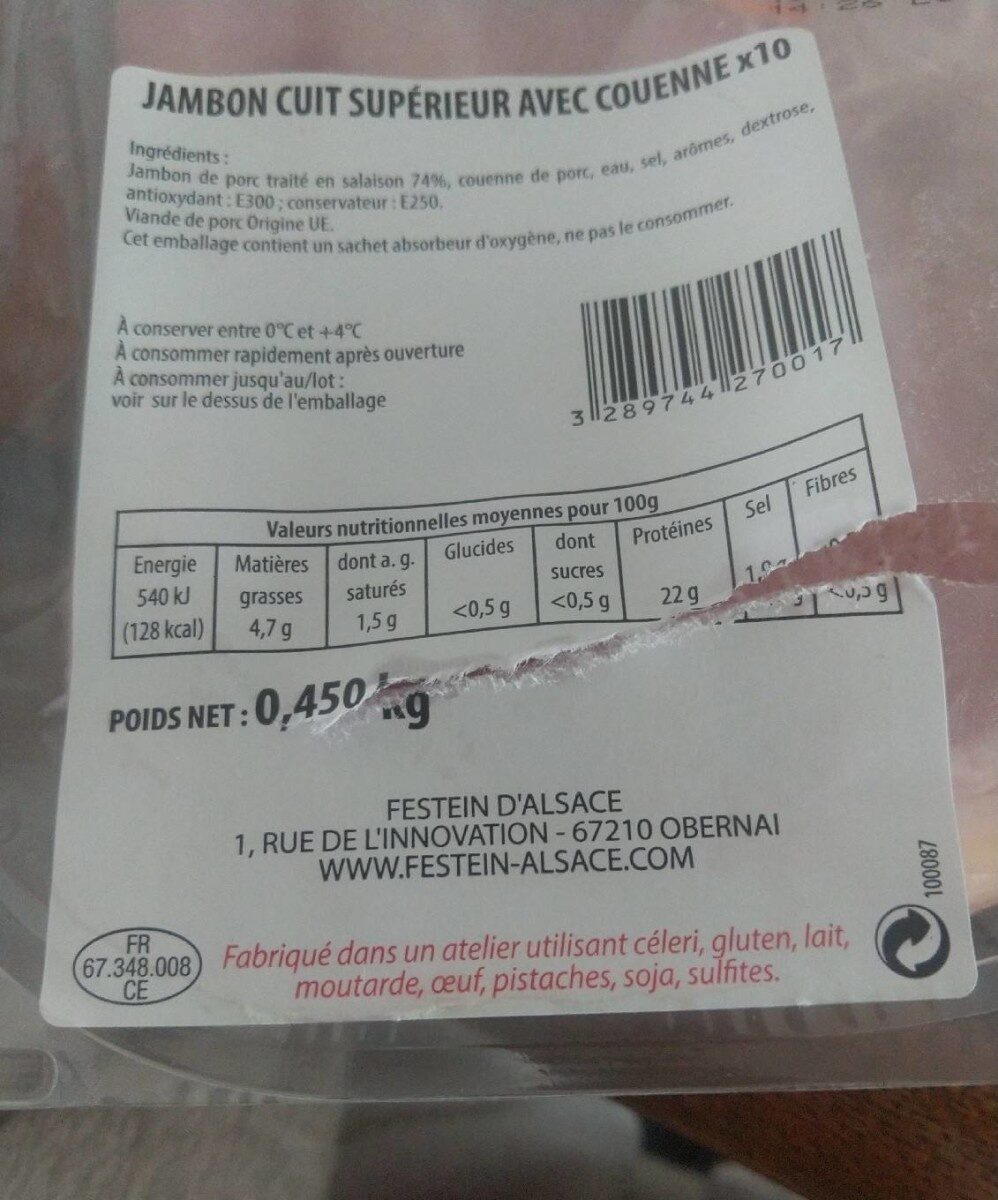JB CUIT SUP AC X10 CR598 - La sélection de notre charcutier - 0,450 kg
This product page is not complete. You can help to complete it by editing it and adding more data from the photos we have, or by taking more photos using the app for Android or iPhone/iPad. Thank you!
×
Barcode: 3289744270017 (EAN / EAN-13)
Quantity: 0,450 kg
Packaging: Plastic, Tray, Vacuum-packed
Brands: La sélection de notre charcutier, Charcuterie de la Vallée de la Bruche
Categories: Meats and their products, Meats, Prepared meats, Hams, White hams
Origin of ingredients: European Union
Traceability code: FR 67.348.008 CE - Obernai (Bas-Rhin, France)
Stores: Simply
Countries where sold: France
Matching with your preferences
Environment
Carbon footprint
Packaging
Transportation
Report a problem
Data sources
Product added on by tacite
Last edit of product page on by roboto-app.
Product page also edited by kiliweb, packbot, sebleouf, trigoana, yuka.Vzc0UU1mOEF0dWNGbS9NbjRETDU0dEZYdzQvMmNFS0ZCOXMwSVE9PQ, yuka.sY2b0xO6T85zoF3NwEKvlksXVOiP-CufEAHkg2it1oafFpi2SvF3_4_cHKs.








